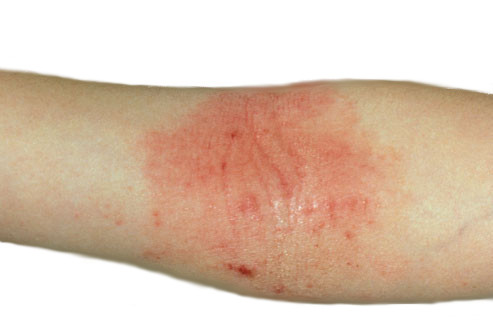

Lebrikizumab had “generally consistent” results in improving atopic dermatitis across different races, according to results of a phase 2b study presented at Maui Derm for Dermatologists.
“Although the presentation of AD may differ between racial subgroups, Th2 cell activation occurs regardless of race in patients with AD; therefore, it is expected that [lebrikizumab] will improve AD symptoms across race subgroups,” April Armstrong, MD, MPH, and colleagues wrote in the poster presentation.
Armstrong and colleagues conducted a randomized, double-blinded,placebo-controlled, dose-ranging phase 2b study that enrolled adults with Eczema Area Severity Index scores of 16 or higher, Investigator’s Global Assessment scores of 3 or higher and AD for at least 1 year. Seventy-three patients were randomly assigned to subcutaneous lebrikizumab 125 mg every 4 weeks with 250 mg loading dose, 80 patients to lebrikizumab 250 mg every 4 weeks with 500 mg loading dose, 75 patients to lebrikizumab 250 mg every 2 weeks with 500 mg loading dose at weeks 0 and 2, and 52 patients to placebo every 2 weeks for 16 weeks, with a 16-week safety follow-up.
Researchers completed post hoc assessments by race subgroups, which included white and Black patients and an “other” category that combined patients who reported American Indian/Alaska Native, Asian, or multiple or other races. Researchers created the “other” category because of the low number of patients in these groups. The study’s primary endpoint was EASI score changes from baseline to week 16.
Patients in the white, Black and other categories had similar results in EASI score changes.
For the 125 mg every 4 weeks group, patients overall had a 62.3% change vs. placebo (P < .05). White patients had the greatest decrease (69.8%), followed by patients in the other category (65.2%) followed by Black patients (48.4%).
Both 250 mg groups had “marked” improvement. The 250 mg every 2 weeks group had the greatest overall change at 72.1% vs. placebo (P < .001). Among these patients, the rate of decrease was 73.6% for white patients, 73% for Black patients and 69.4% for all other patients. The 250 mg every 4 weeks group had a 69.2% overall decrease vs. placebo (P < .01), a 68.7% decrease for white patients, a 69.3% decrease for Black patients and a 74.6% decrease for patients in the other category.
Decreases in the placebo group were 41.1% for all patients, 47.4% for white patients, 34.8% for Black patients and 32.3% for patients in the other group.
“In these post hoc analyses by race subgroup, similar results to the overall findings were observed and were generally consistent across racial groups,” the researchers wrote. “These data highlight that selective blockade of IL-13 with [lebrikizumab] leads to improvements in skin and itch symptoms while maintaining a favorable safety profile across a broad AD patient population.”
more recommended stories
 Safer Allogeneic Stem Cell Transplants with Treg Therapy
Safer Allogeneic Stem Cell Transplants with Treg TherapyA new preclinical study from the.
 Autoimmune Disorders: ADA2 as a Therapeutic Target
Autoimmune Disorders: ADA2 as a Therapeutic TargetAdenosine deaminase 2 (ADA2) has emerged.
 Kaempferol: A Breakthrough in Allergy Management
Kaempferol: A Breakthrough in Allergy ManagementKaempferol, a dietary flavonoid found in.
 Early Milk Cereal Drinks May Spur Infant Weight Gain
Early Milk Cereal Drinks May Spur Infant Weight GainNew research published in Acta Paediatrica.
 TaVNS: A Breakthrough for Chronic Insomnia Treatment
TaVNS: A Breakthrough for Chronic Insomnia TreatmentA recent study conducted by the.
 First-of-Its-Kind Gene-Edited Pig Kidney: Towana’s New Life
First-of-Its-Kind Gene-Edited Pig Kidney: Towana’s New LifeSurgeons at NYU Langone Health have.
 Just-in-Time Training Improves Success & Patient Safety
Just-in-Time Training Improves Success & Patient SafetyA study published in The BMJ.
 ChatGPT Excels in Medical Summaries, Lacks Field-Specific Relevance
ChatGPT Excels in Medical Summaries, Lacks Field-Specific RelevanceIn a recent study published in.
 Study finds automated decision minimizes high-risk medicine combinations in ICU patients
Study finds automated decision minimizes high-risk medicine combinations in ICU patientsA multicenter study coordinated by Amsterdam.
 Study Discovers Connection Between Omicron Infection and Brain Structure Changes in Men
Study Discovers Connection Between Omicron Infection and Brain Structure Changes in MenA recent study in the JAMA.

Leave a Comment